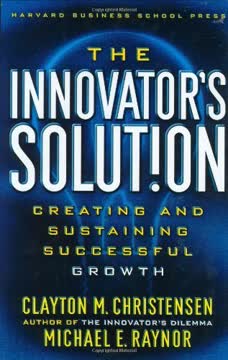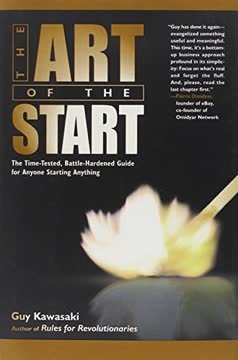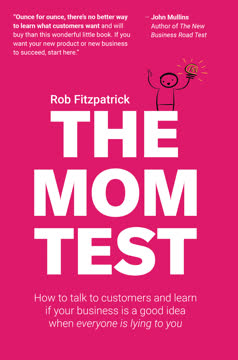重点摘要
1. 客户开发:创业成功的关键
客户开发是非常艰苦的工作。你不能假装。
四步流程。 客户开发方法包括四个关键步骤:客户发现、客户验证、客户创建和公司建设。这个迭代过程帮助初创公司发现和验证其目标市场,优化产品提供,并建立可扩展的商业模式。
与传统方法的对比。 不同于假设已知市场和客户基础的传统产品开发模型,客户开发承认初创公司固有的不确定性。它强调学习和发现而非执行,使创始人能够测试他们的假设,并根据真实客户反馈迅速调整。
客户开发的关键原则:
- 走出办公室,与真实客户交谈
- 通过快速实验测试假设
- 根据客户反馈迭代和调整
- 在扩展之前专注于学习和发现
2. 商业模式画布:初创公司的动态工具
静态商业计划和动态模型之间的区别可能就是失败和成功的区别。
视觉表示。 由亚历山大·奥斯特瓦尔德开发的商业模式画布是一种战略管理工具,允许初创公司可视化、设计和调整其商业模式。它包括九个关键组成部分:价值主张、客户细分、渠道、客户关系、收入来源、关键资源、关键活动、关键合作伙伴和成本结构。
迭代工具。 不同于静态商业计划,商业模式画布设计为灵活和可适应的。初创公司在客户开发过程中使用它作为记分卡,更新他们的假设并跟踪他们在收集真实世界数据和见解时的进展。
使用商业模式画布的好处:
- 提供业务的整体视图
- 促进快速迭代和调整
- 鼓励跨职能合作
- 帮助识别关键假设和风险
3. 走出办公室:用真实客户测试你的假设
事实只存在于办公室外,客户所在的地方,因此客户发现的最重要方面是走出办公室,面对客户。
直接客户互动。 客户开发的核心原则是创始人必须亲自与潜在客户互动以验证他们的假设。这意味着进行面对面的访谈,观察客户行为,并收集关于问题和拟议解决方案的第一手反馈。
避免假设。 许多初创公司失败是因为他们基于未经测试的客户需求和偏好假设构建产品。通过走出办公室,创始人可以挑战自己的偏见,并收集真实数据来指导他们的决策。
走出办公室的关键活动:
- 进行客户访谈和调查
- 参加行业活动和展会
- 在自然环境中观察客户
- 进行小规模实验以测试假设
4. 最小可行产品:从小做起,快速学习
最小可行产品的目标是构建最小的功能集。
快速学习工具。 最小可行产品(MVP)是具有足够功能的产品版本,用于收集关于客户及其需求的验证性学习。它允许初创公司快速测试他们的假设,并根据真实客户反馈进行迭代,而无需在完整产品开发上投入过多时间和资源。
迭代开发。 MVP方法鼓励初创公司尽早发布并频繁发布,根据客户互动不断优化产品。这个迭代过程帮助初创公司避免构建客户不想要或不需要的功能,并专注于提供解决实际问题的价值。
MVP开发的关键原则:
- 专注于解决主要客户问题的核心功能
- 快速发布并收集反馈
- 优先学习而非完美
- 根据客户见解进行迭代
5. 转型或坚持:拥抱失败并迭代
失败并不是真正的失败,而是创业学习过程的一个组成部分。
从失败中学习。 在创业世界中,失败不仅常见而且是预期的。关键是将失败视为学习机会,并用它们来指导业务模型的未来迭代。转型——对业务模型的一个或多个组成部分进行重大更改——是创业旅程的自然部分。
数据驱动决策。 转型或坚持的决定应基于通过客户互动和实验收集的数据。初创公司需要建立明确的指标和里程碑,以客观评估他们的进展,并确定何时需要转型。
转型类型:
- 客户细分转型
- 价值主张转型
- 渠道转型
- 技术转型
- 收入模型转型
6. 市场类型决定策略:明智选择
市场类型影响公司所做的一切。
四种市场类型。 Blank识别了四种不同的市场类型:现有市场、重新细分市场、新市场和克隆市场。每种市场类型都需要不同的客户开发、产品定位和市场进入策略。
战略意义。 了解你的市场类型对于制定有效策略至关重要。例如,进入现有市场需要明确的差异化和卓越的性能,而创建新市场则需要广泛的客户教育和长期愿景。
不同市场类型的特征:
- 现有市场:已知的客户、竞争对手和商业模式
- 重新细分市场:针对未被满足的细分市场或低成本细分市场
- 新市场:没有现有客户或竞争对手,需要创建市场
- 克隆市场:在新地理区域复制成功的商业模式
7. 早期用户的力量:你的首批关键客户
早期用户是你病毒式增长的愿意或渴望的加速器。
有远见的客户。 早期用户是一种特殊类型的客户,他们积极寻找问题的解决方案,并愿意尝试早期阶段的产品。他们对初创公司至关重要,因为他们提供有价值的反馈,产生早期收入,并可以成为产品的强大倡导者。
早期用户的特征。 识别和吸引早期用户是客户开发过程中的关键任务。这些客户通常有一个他们积极尝试解决的问题,深刻理解痛点,并有预算和权力做出购买决策。
早期用户的关键特征:
- 了解问题并积极寻找解决方案
- 拼凑临时解决方案
- 有预算用于解决方案
- 在其组织或社区中有影响力
- 愿意冒险尝试新技术
8. 重要的指标:关注驱动成功的因素
初创公司的指标应关注将猜测和假设转化为无可争议的事实,而不是衡量静态计划的执行情况。
数据驱动决策。 初创公司需要关注提供可操作见解并推动业务增长的指标。传统的财务指标如收入和利润通常是早期初创公司的滞后指标。相反,关注反映客户行为、产品市场契合度和商业模式效率的指标。
关键绩效指标。 确定最相关于你的商业模式和增长阶段的关键指标。对于网络/移动初创公司,这可能包括用户获取成本、激活率、留存率和客户终身价值。对于实体产品,这可能是销售周期长度、转化率和客户获取成本。
重要的初创公司指标示例:
- 客户获取成本(CAC)
- 客户终身价值(LTV)
- 流失率
- 每月经常性收入(MRR)
- 净推荐值(NPS)
9. 网络/移动初创公司:独特的挑战和机遇
高效且经济地聚集大量不断增长的受众是大多数网络/移动产品的首要任务。
快速迭代。 网络/移动初创公司具有快速发布、实时收集数据并根据用户反馈快速迭代的优势。这使得与实体产品初创公司相比,学习和适应速度更快。
用户获取和激活。 对于网络/移动初创公司,主要挑战通常是大规模获取和激活用户。这需要对用户行为的深刻理解,有效的营销渠道,以及用户体验的持续优化。
网络/移动初创公司的关键关注领域:
- 用户获取策略(付费和有机)
- 入职和激活优化
- 留存和参与策略
- 病毒式增长机制
- 货币化策略
10. 定位的艺术:在市场中脱颖而出
没有根据的超级词汇如最简单、最好和最伟大是没有意义的。可证明的、可验证的声明如最快和最便宜更有力。
差异化是关键。 有效的定位帮助初创公司在拥挤的市场中脱颖而出,通过清晰传达其独特的价值主张。这涉及了解竞争格局,识别关键客户痛点,并阐明你的解决方案如何比替代方案更好地解决这些需求。
不断演变的定位。 随着初创公司在客户开发过程中取得进展,他们的定位可能会根据客户反馈和市场见解而演变。重要的是不断优化你的定位,以确保它与目标受众产生共鸣,并准确反映你的价值主张。
有效定位的要素:
- 清晰阐述你解决的问题
- 独特的价值主张
- 目标客户定义
- 竞争差异化
- 证明点和可信度构建
最后更新日期:
FAQ
What's The Startup Owner's Manual about?
- Comprehensive Guide: The Startup Owner's Manual by Steve Blank is a detailed guide for entrepreneurs on building successful startups.
- Customer Development Focus: It emphasizes the importance of understanding customer needs and validating business models through direct customer interaction.
- Structured Approach: The book outlines a structured approach with practical tools and frameworks, such as the Business Model Canvas, to systematically test and refine business ideas.
Why should I read The Startup Owner's Manual?
- Proven Methodology: The book presents a proven methodology that has been adopted by many successful entrepreneurs, reducing the risk of failure.
- Real-World Examples: It includes numerous real-world examples and case studies, making the concepts relatable and easier to understand.
- Actionable Insights: Readers gain practical advice that can be immediately applied to their ventures, making it valuable for both new and experienced entrepreneurs.
What are the key takeaways of The Startup Owner's Manual?
- Customer-Centric Approach: Emphasizes engaging with customers directly to validate assumptions and understand real problems.
- Iterative Learning: Advocates for continuously testing and refining business models based on customer feedback.
- Business Model Canvas: Introduces this tool to visualize and organize business model hypotheses, aiding in tracking progress and making informed decisions.
What is the Customer Development process in The Startup Owner's Manual?
- Four Phases: Consists of Customer Discovery, Customer Validation, Customer Creation, and Company Building.
- Hypothesis Testing: Involves formulating and testing business model hypotheses through direct customer interactions.
- Iterative Feedback Loop: Encourages a feedback loop where customer insights inform subsequent actions and decisions.
How does The Startup Owner's Manual define a Minimum Viable Product (MVP)?
- Core Features Only: An MVP is the simplest version of a product with essential features to solve a core problem for early customers.
- Testing Assumptions: Its purpose is to test assumptions about customer needs and validate the product's value proposition.
- Iterative Improvement: Feedback from MVP users is used to iteratively improve the product, ensuring it meets market demands.
What is the significance of the Business Model Canvas in The Startup Owner's Manual?
- Visual Framework: Serves as a visual tool to outline and organize business model hypotheses.
- Hypothesis Testing: Allows entrepreneurs to track assumptions and validate them through customer feedback.
- Dynamic Document: The canvas evolves as more information and insights are gathered, aiding in navigating startup uncertainties.
What are the common pitfalls startups face according to The Startup Owner's Manual?
- Premature Scaling: Expanding operations before validating the business model can lead to significant cash burn and failure.
- Ignoring Customer Feedback: Believing they know what customers want without listening can result in products that don't resonate.
- Overcomplicating the Product: Adding too many features can dilute the core value proposition and confuse potential buyers.
How does The Startup Owner's Manual suggest handling customer feedback?
- Active Listening: Emphasizes understanding customer needs and pain points rather than pushing the product.
- Iterative Process: Feedback should be used to refine the product and business model continuously.
- Documenting Insights: Encourages systematic documentation of insights to track progress and inform future actions.
What is the importance of earlyvangelists in the startup process according to The Startup Owner's Manual?
- Visionary Customers: Earlyvangelists are visionary customers who recognize significant problems and are eager for solutions.
- Feedback Providers: They provide valuable feedback that helps shape the product and its features.
- Risk Takers: Willing to take risks on new products, they help validate the startup's value proposition and build market momentum.
What are the best quotes from The Startup Owner's Manual and what do they mean?
- "There Are No Facts Inside Your Building, So Get Outside.": Emphasizes the necessity of engaging with customers directly to gather real insights.
- "No business plan survives first contact with customers.": Highlights the unpredictability of the startup journey and the need for flexibility.
- "Failure is an Integral Part of the Search.": Suggests that failure provides valuable learning opportunities in the startup process.
How does The Startup Owner's Manual define market types?
- Four Market Types: Existing markets, new markets, re-segmented markets, and clone markets.
- Impact on Strategy: Each type influences strategy, including customer acquisition, pricing, and competitive positioning.
- Tailored Approaches: Understanding the market type helps tailor the approach to customer discovery and validation.
How do I know when to pivot or proceed with my startup according to The Startup Owner's Manual?
- Data-Driven Decisions: Base the decision on thorough analysis of customer feedback and validation results.
- Key Metrics: Focus on metrics like customer acquisition costs and conversion rates to assess alignment with business expectations.
- Team Consensus: Engage the team and advisors in discussions to ensure alignment and commitment to the chosen direction.
评论
《创业者手册》获得了大量好评,平均评分为4.10/5。读者称赞其实用的、循序渐进的方法,专注于客户发现和验证。许多人认为这是创业者必读的书,提供了关于商业模式开发和精益创业原则的宝贵见解。一些人批评其风格枯燥、公式化且重复,而另一些人则欣赏其全面性。特别推荐给那些处于创业初期或对了解创业动态感兴趣的人士。
Similar Books















